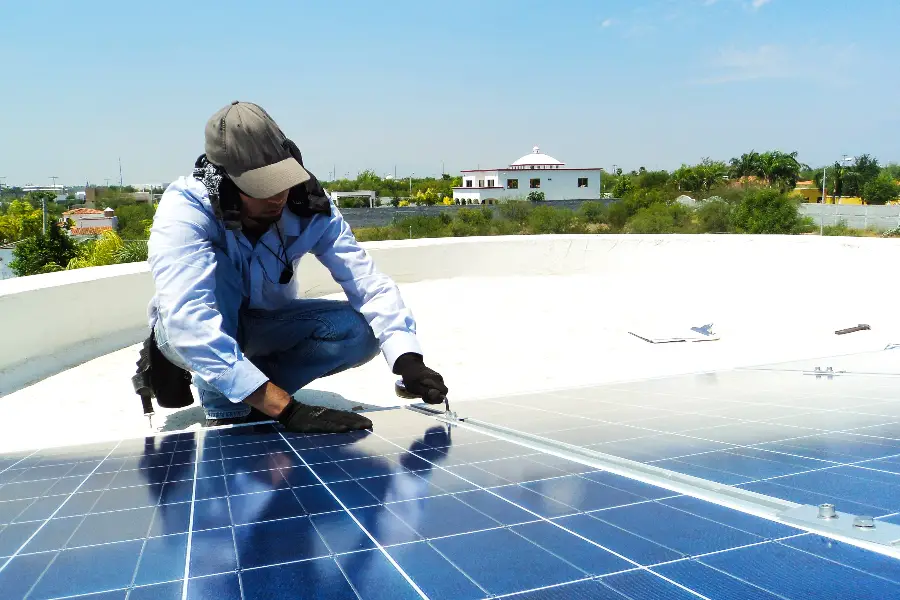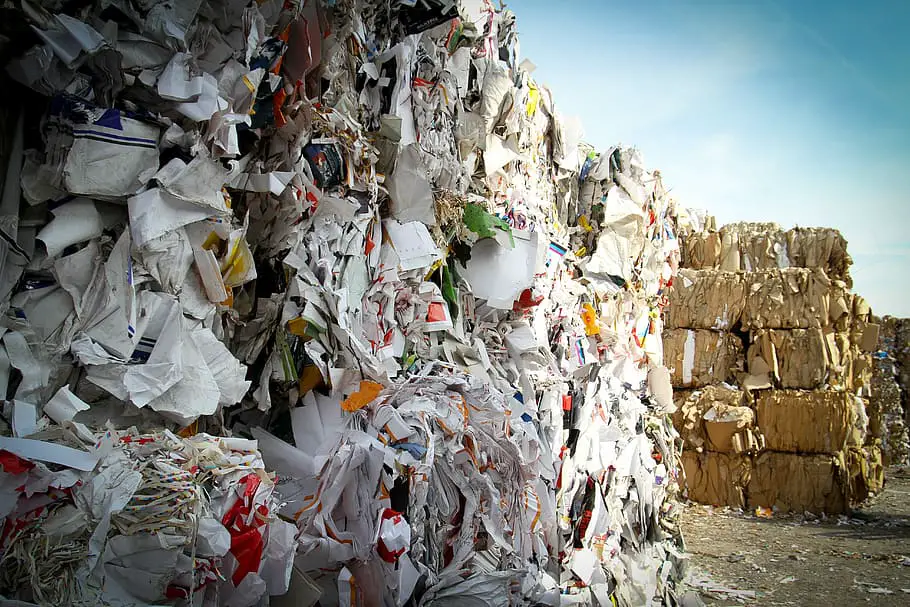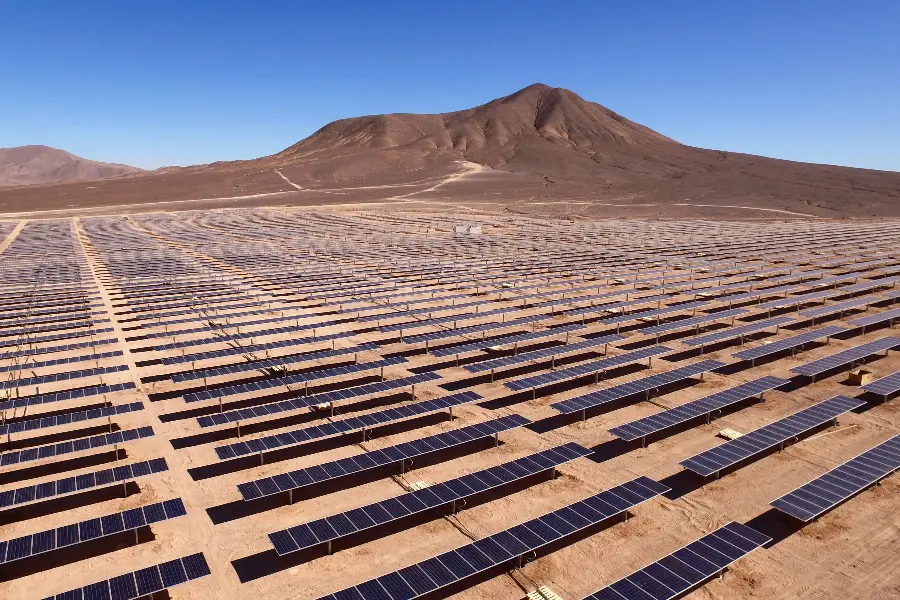
Join us as we explore the question ‘Does solar energy reduce pollution’ and uncover the transformative power of the sun for a cleaner, greener future!
Ever wondered, does solar energy reduce pollution? Well, you’re in the right place!
As we increasingly turn our gaze toward sustainable solutions, solar energy shines brightly as a beacon of hope for renewable energy sources.
Not only does it harness the immense power of our sun, but it also plays a pivotal role in reducing pollution.
So, let’s dive in together and explore how this incredible renewable energy source is helping us create a cleaner, greener planet.
Does Solar Energy Reduce Pollution
Welcome to our deep dive into the question, ‘Does solar energy reduce pollution?’
In this post, we’ll be exploring the magic behind solar energy, how it works, and the different types of solar energy systems available.
We’ll also delve into the significant impact solar energy has on reducing pollution, comparing it with other energy sources, and looking at the future of solar energy.
We’ve even included a handy FAQ section to answer some of your burning questions.
So, buckle up and get ready for an enlightening journey into the world of solar energy and its role in creating a healthier, more sustainable world.
Brief Overview of Solar Energy
Let’s start at the beginning, shall we? Solar energy is a truly remarkable thing. It’s the energy we get directly from the sun, and it’s been powering our planet for billions of years.
It’s what makes plants grow, drives the weather systems, and at the end of the day, it’s the source of virtually all energy on Earth.
In more technical terms, solar energy is harnessed using a range of ever-evolving technologies such as solar heating, photovoltaics, solar thermal energy, and even artificial photosynthesis.
Harnessing the sun’s energy is a clean, abundant, and most importantly, renewable source of energy.
Importance of Solar Energy in Reducing Pollution
Now, let’s talk about why solar energy is so important in reducing pollution.
Traditional energy sources, like coal and natural gas, release harmful pollutants into the air when burned for electricity. They can also create hazardous materials like solid waste or polluted water as a byproduct of electricity generation.
These pollutants not only harm our health but also contribute to climate change and can result in habitat loss.
On the other hand, solar energy is a much cleaner choice. When we use solar panels to generate electricity, there are no harmful emissions. They do not affect our air quality in any way. Solar farms have a positive impact becoming an important way we are reducing our carbon footprint in the United States.
It’s a win-win situation: we get the power we need without the pollution. The more we can shift towards solar energy, the less we’ll rely on fossil fuels, and the cleaner our air will be. As we move away from the use of limited fossil fuels we move closer to energy independence too.
And that’s something worth striving for, don’t you think?
Understanding Solar Energy
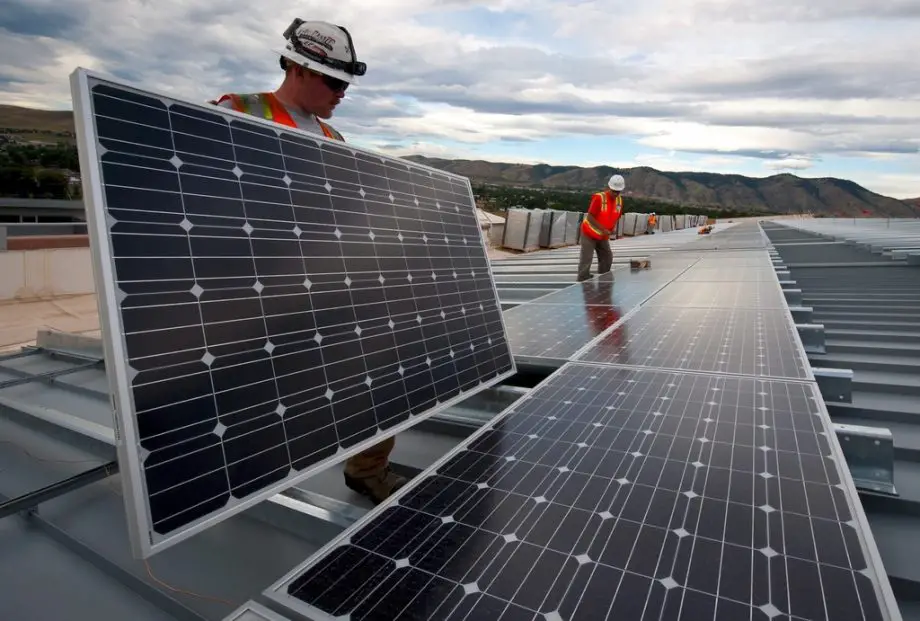
Ready to become a solar energy whizz? In this section, we’re going to delve into the world of solar energy and really get to grips with what it is, how it works, and the different types of solar energy systems out there.
It’s a fascinating journey that takes us from the heart of our sun to the solar panel on your neighbor’s roof.
So, let’s get started and unravel the mysteries of solar energy together!
What is Solar Energy?
Let’s kick things off with the basics. So, what is solar energy?
Well, in the simplest terms, solar energy is the energy we get directly from the sun. Imagine the sun as a giant, natural nuclear reactor releasing packets of energy called photons.
These photons travel 93 million miles from the sun to Earth in about 8.5 minutes.
Every hour, enough photons impact our planet to theoretically satisfy global energy needs for an entire year. Now, isn’t that something?
According to Wikipedia:
Solar energy is radiant light and heat from the Sun that is harnessed using a range of technologies such as solar power to generate electricity, solar thermal energy (including solar water heating), and solar architecture.
By using clean energy sources we can help mitigate the effects of climate change.
How Does Solar Energy Work?
You might be wondering, That’s great, but how do we capture and use this energy? Excellent question!
Solar energy is harnessed for electricity production by using solar panels, which are made up of many individual solar cells.
These cells contain a semiconductor material, like silicon, which absorbs the sunlight.
When the sun’s photons hit a solar cell, they knock electrons loose from their atoms.
As these electrons flow through the cell, they generate electricity.
This process is known as the photovoltaic effect, and it’s the principle at the heart of solar energy production.
Types of Solar Energy Systems
There are several types of solar energy systems, each suited to different needs.
The most common type you’ll see are photovoltaic systems, or PV systems, which convert sunlight directly into electricity using the process we just discussed.
Then there are solar thermal systems. Solar thermal plants which capture the sun’s heat can be used directly for heating water or air, or it can be converted into electricity using a turbine.
Concentrated solar power systems use mirrors to focus sunlight onto a small area, typically a thermal receiver, which collects the heat and converts it into electricity.
Each system has its own advantages and is suited to different applications, but all of them harness the power of the sun to provide clean, renewable energy.
The Impact of Solar Energy on Pollution Reduction
Now that we’ve got a handle on what solar energy is and how it works, let’s dive into the heart of the matter: the impact of solar energy on pollution reduction.
This is where things really start to get exciting! We’re going to explore how harnessing the power of the sun can help us reduce greenhouse gas emissions, cut down on air pollution, and even lessen water pollution.
So, let’s roll up our sleeves and discover the transformative power of solar energy in creating a cleaner, healthier world.
How Solar Energy Reduces Greenhouse Gas Emissions
First up, let’s talk about greenhouse gases. These are gases like carbon dioxide and methane that trap heat in our atmosphere, leading to global warming and climate change.
Now, where does solar energy fit into this picture? Well, traditional energy sources like coal and natural gas release a lot of these greenhouse gases when they’re burned for electricity.
Solar energy, on the other hand, produces electricity without any combustion or emissions.
This means that every kilowatt-hour of solar energy produced is a kilowatt-hour of electricity that doesn’t contribute to climate change.
It’s a simple equation: more solar energy equals less greenhouse gas emissions.
Solar Energy’s Role in Reducing Air Pollution
Next, let’s consider air pollution. Burning fossil fuels doesn’t just release greenhouse gases; it also emits pollutants like sulfur dioxide, nitrogen oxides, and particulate matter.
These pollutants can cause a range of human health problems, from asthma to heart disease.
Again, solar energy comes to the rescue. Since solar panels produce electricity without burning anything, they don’t release any of these harmful pollutants.
So, by switching to solar energy, we can breathe a little easier knowing we’re doing our part to keep the air clean.
The Impact of Solar Energy on Water Pollution
Finally, let’s not forget about water pollution. Traditional power plants need a lot of water for cooling, and they often discharge hot water and other pollutants back into our waterways, which can harm aquatic life.
Solar photovoltaic systems, on the other hand, require no water to generate electricity.
This not only helps conserve water but also means that solar energy doesn’t contribute to water pollution. It’s another win for solar energy in the fight against pollution!
Comparing Solar Energy to Other Energy Sources
Alright, we’ve seen how solar energy can help reduce pollution, but how does it stack up against other energy sources?
In this section, we’re going to put solar energy in the ring with fossil fuels and nuclear energy.
We’ll compare their impacts on the environment, their efficiency, and their potential for our energy future.
It’s a heavyweight match-up, so let’s get ready to rumble and see how solar energy measures up!
Solar Energy vs. Fossil Fuels
Let’s start with the big one: solar energy versus fossil fuels. Fossil fuels, like coal, oil, and natural gas, have been the backbone of our energy system for a long time.
But they come with a hefty environmental price tag. They release harmful pollutants when burned, contribute to climate change, and their extraction can cause significant environmental damage.
Plus, they’re finite resources, which means they’ll eventually run out.
On the flip side, solar energy is clean, renewable, and abundant. It doesn’t release any harmful pollutants when generating electricity, and it doesn’t contribute to climate change.
Plus, the sun isn’t going anywhere anytime soon, so we’ve got a pretty reliable source of energy for the foreseeable future.
When it comes to environmental impact and sustainability, solar energy clearly has the upper hand.
Solar Energy vs. Nuclear Energy
Now, let’s consider nuclear energy. Nuclear power plants produce a lot of electricity without releasing carbon dioxide, which makes them an attractive option for tackling climate change.
However, they come with their own set of challenges. Nuclear waste is hazardous and needs to be stored for thousands of years, and there’s always the risk, however small, of a nuclear accident.
Environmental benefits of solar energy
Solar energy, on the other hand, doesn’t produce any hazardous waste or pose any risk of a catastrophic accident.
It’s a safe, clean way to generate electricity. While nuclear energy has its merits, when it comes to safety and environmental impact, solar energy shines brighter.
The Future of Solar Energy
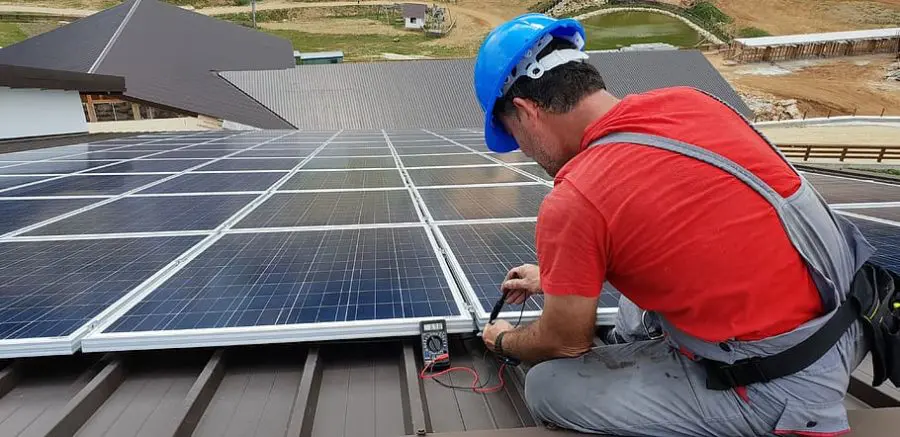
Having explored the ins and outs of solar energy and its role in reducing pollution, let’s now turn our gaze toward the horizon and ponder the future of solar energy.
What advancements can we expect in solar technology? How will government policies shape the landscape of solar energy?
Let’s embark on this journey into the future together and envision a world powered by the sun!
Advancements in Solar Technology
The future of solar energy is bright, and a lot of that has to do with advancements in solar technology.
Solar panels are becoming more efficient, more affordable, and more versatile. Energy costs to produce solar power are now equal to or cheaper than fossil fuel costs from coal-fired plants.
This financial benefit means increasing use of solar panels and we will see more solar energy facilities being built.
We’re seeing the development of thin-film solar cells that can be integrated into windows and building materials, making it easier than ever to harness the power of the sun.
There’s also exciting research being done on perovskite solar cells, which could revolutionize the solar industry with their high efficiency and low production costs.
And let’s not forget about solar storage solutions, like advanced batteries, which are crucial for making solar power available around the clock.
All these advancements are making solar energy more accessible and more effective, paving the way for a solar-powered future.
The Role of Government and Policy in Promoting Solar Energy
Of course, technology is only part of the equation. Government and policy play a crucial role in promoting solar energy.
Policies like net metering, which allows solar panel owners to sell excess electricity back to the grid, and tax incentives for solar installations can make solar energy more affordable and attractive.
Government research funding can also drive innovation in solar technology.
And by setting renewable energy targets, governments can encourage the adoption of solar energy on a larger scale.
The future of solar energy will be shaped not just by technological advancements, but also by the decisions we make as a society.
And with the right policies in place, we can make that future a reality.
Does Solar Energy Reduce Pollution FAQs
Got questions about solar energy? You’re not alone! In this section, we’re going to tackle some of the most frequently asked questions about solar energy and its role in reducing pollution.
From the amount of pollution solar energy can prevent to the efficiency of solar energy compared to other sources, we’ve got you covered. So, let’s dive into these questions and quench our thirst for knowledge!
Q: How much pollution can solar energy prevent?
A: Solar energy can significantly reduce pollution. A typical residential solar panel system can prevent over 5 tons of carbon dioxide emissions each year.
That’s equivalent to not burning more than 1.7 tons of coal annually. When you consider the potential of solar energy on a larger scale, the pollution prevention capacity is truly impressive.
Q: What are the environmental impacts of solar energy production?
A: While solar energy is a clean source of energy, its production does have some environmental impacts.
The manufacturing of solar panels involves the extraction and processing of raw materials, which can lead to habitat destruction and pollution.
However, these impacts are significantly less than those associated with fossil fuel extraction and use.
As we build larger solar farms they do have an affect on land use.
Additionally, solar panels have a long lifespan and can be recycled at the end of their life, further reducing their environmental impact.
Q: How efficient is solar energy compared to other energy sources?
A: The efficiency of a solar panel, which refers to its ability to convert sunlight into usable electricity, typically ranges from about 15-20% for most commercial panels.
While this might seem low compared to some other energy sources, it’s important to remember that the fuel (sunlight) is free and unlimited.
Furthermore, advancements in solar technology are continually improving the efficiency of solar panels.
So, in terms of environmental impact and sustainability, solar energy is a highly efficient energy source.
How Does Solar Energy Reduce Pollution Final Thoughts
As we wrap up our deep dive into solar energy and its role in reducing pollution, let’s take a moment to reflect on what we’ve learned.
From understanding the basics of solar energy to exploring its future, we’ve covered a lot of ground.
In this final section, we’ll recap the importance of solar energy in pollution reduction and encourage further research and adoption of this incredible renewable energy source.
So, let’s bring it all together and look at why solar energy truly is a shining star in our quest for a cleaner, greener future.
Recap of the Importance of Solar Energy in Pollution Reduction
As we’ve journeyed through the world of solar energy, one thing has become abundantly clear: solar energy plays a crucial role in reducing pollution.
From cutting down greenhouse gas emissions to reducing air and water pollution, solar energy is a true environmental champion.
By harnessing the power of the sun, we can generate electricity without the harmful emissions associated with burning fossil fuels.
And that’s a big deal. It means cleaner air, healthier communities, and a significant step towards tackling climate change.
Encouragement for Further Research and Adoption of Solar Energy
But our journey doesn’t have to end here. There’s so much more to learn and discover about solar energy.
Whether it’s keeping up with the latest advancements in solar technology, understanding the policies that promote solar energy, or exploring ways to incorporate solar energy into your own life, there’s always more to explore.
And as for adoption, every solar panel installed brings us one step closer to a cleaner, greener world for future generations.
So, whether you’re considering solar panels for your home, advocating for solar energy in your community, or simply spreading the word about the benefits of solar energy, remember: every bit helps.
Together, we can harness the power of the sun to create a brighter, cleaner future for us all.




